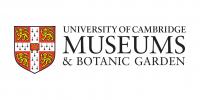Session outline
In this session we will explore animal skeletons: what they are, how they work and why they are important. The session begins with a discussion of what a skeleton is and the different components of a mammal skeleton using specimens in the displays and comparison with our own. Handling sessions look at what bones are made of, and a detailed look at the structure of the skull and adaptations for feeding. Pupils have the opportunity to work in small groups to explore in detail at one of the skeletons of display. Time permitting, the session looks at non-vertebrate skeletons.
Duration
This session lasts a total of around 1.25 hours, organised into activities of no more than 15 minutes. We recommend a 2 hour visit to the Museum, so that your class then has more opportunity to explore the galleries, and have included some suggested self-led activities below.
Resources
We will provide a workbook for the museum-led aspects of this session, and clip-boards for use during your visit. We recommend that you bring pencils with you.
Learning outcomes
- Knowledge and understanding of the composition and importance of animal skeletons
- Comparison of our skeleton with those of other animals
- Introduction to adaptation
- Knowledge of how the teeth of different mammals are adapted to their diets and why this is important
- Observation skills – looking in detail at specimens and drawing and describing structures they can see and feel
- Literacy – providing oral and/or written descriptions of animals in the collections
Curriculum Points
- Identify that humans and some other animals have skeletons and muscles for support, protection and movement
- Identify that animals, including humans need the right types and amount of nutrition, and that they cannot make their own food; they get nutrition from what they eat
- Identify the different types of teeth in humans and their simple functions
- Recording findings using simple scientific language, drawings, labelled diagrams, keys, bar charts, and tables
Related self-led activities
Available Tuesdays, Wednesdays and Thursdays during school term-time. To book this session please see our School Visits page and complete a school booking request form.





